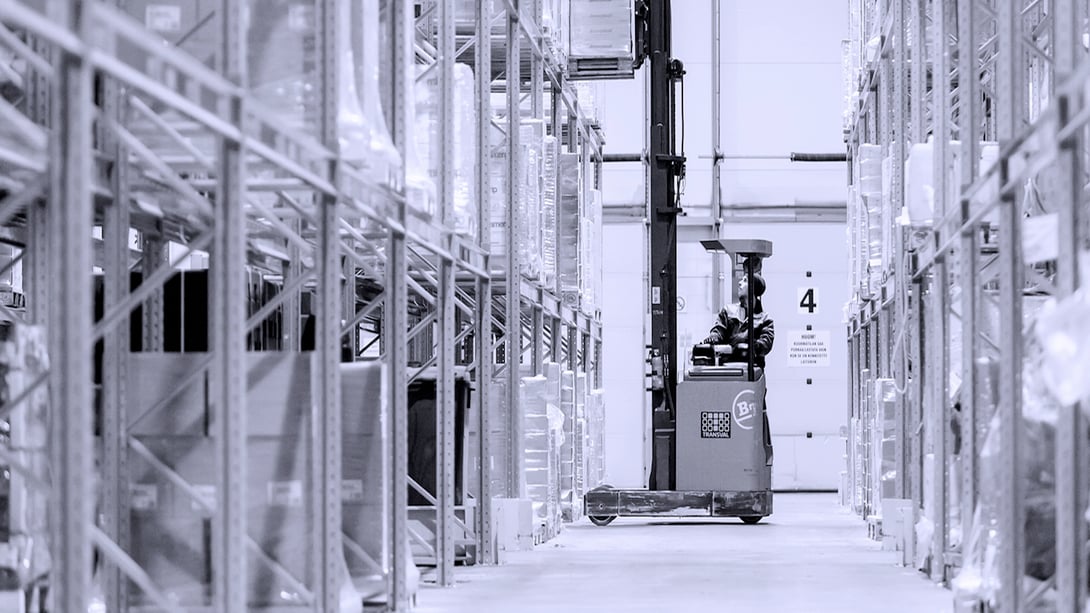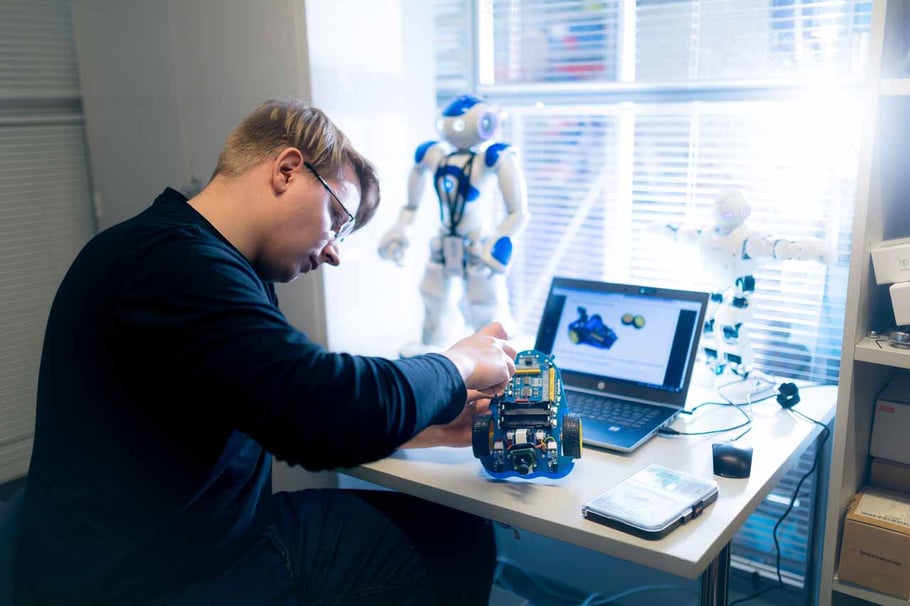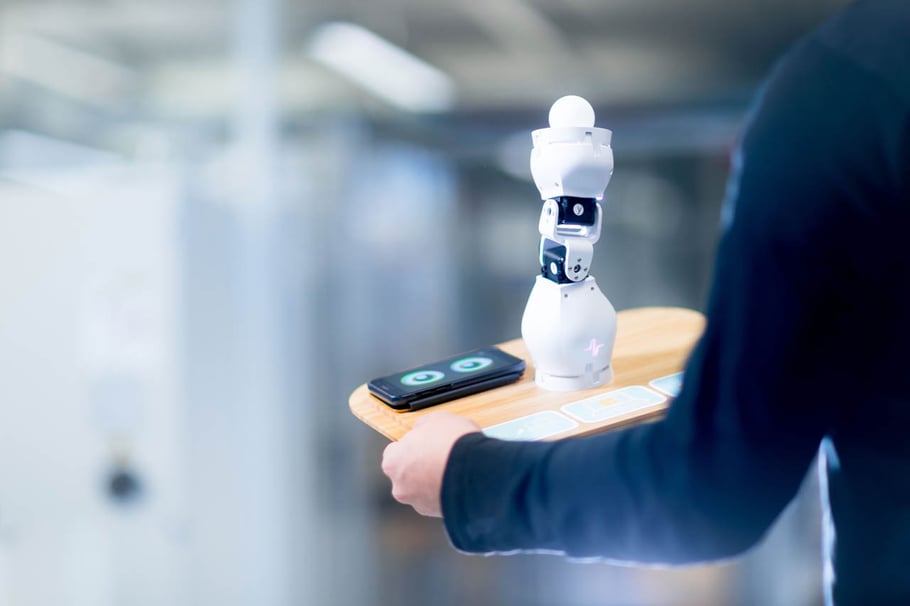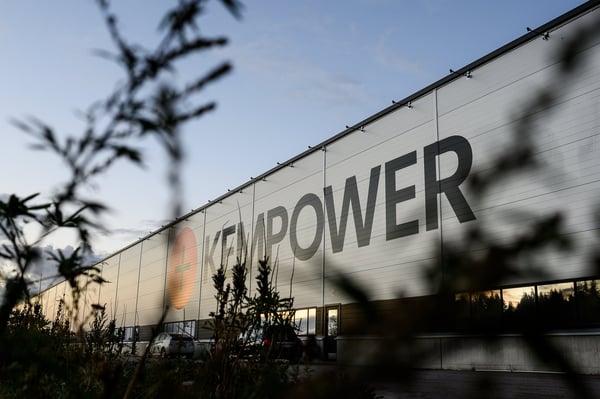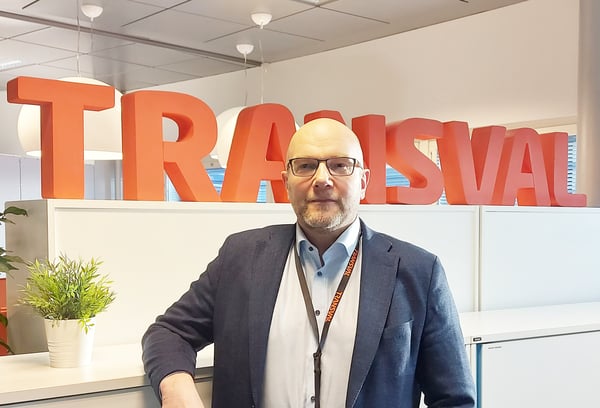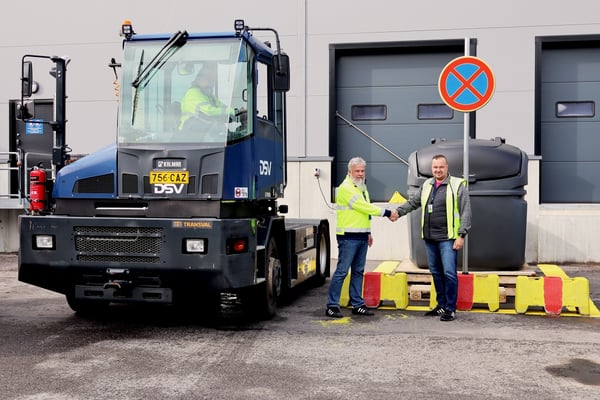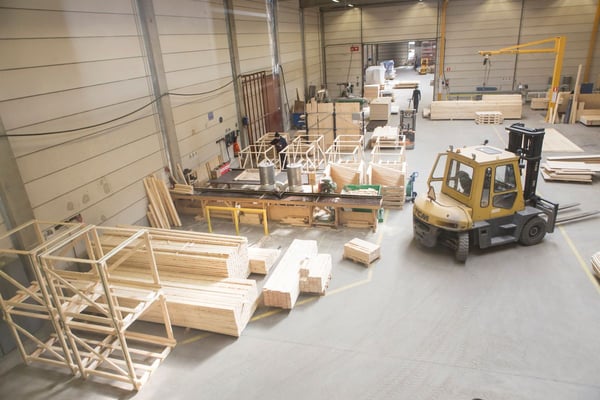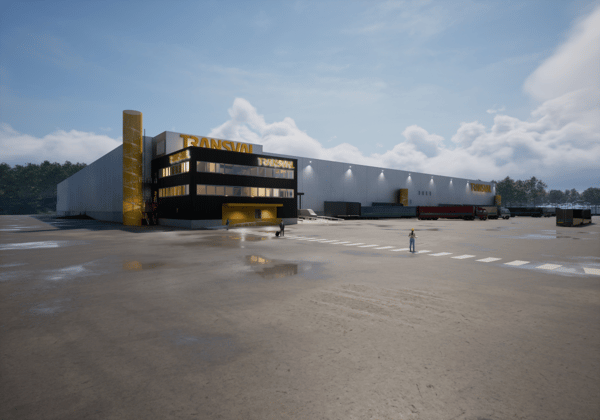Work steps in in-house logistics can be automated with the help of robots. Transval researches and develops robotics together with the JAMK Robotics Center at Jyväskylä University of Applied Sciences.
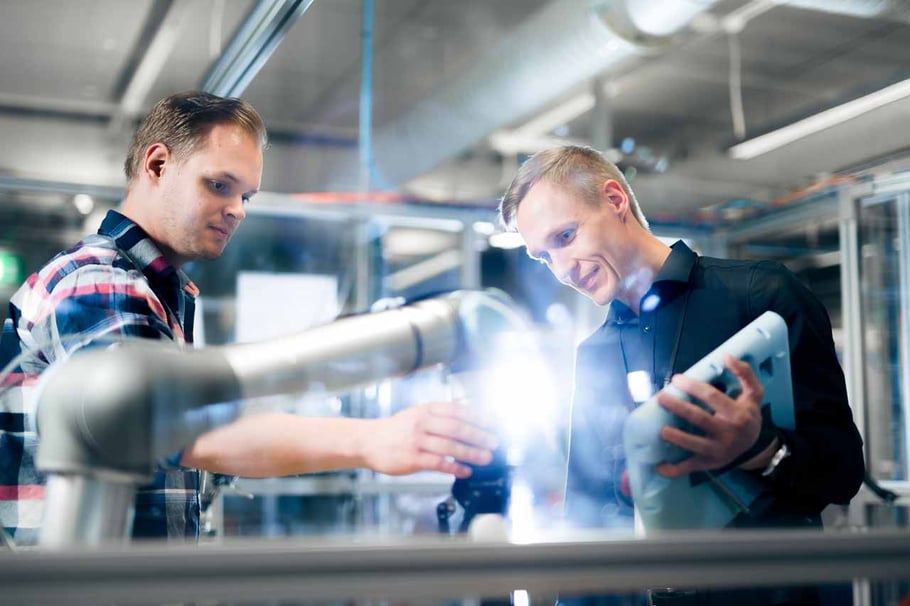
The Internet of Things (IoT) is an old invention. The term dates back to the turn of the millennium, but it was only a few years ago, in 2014, that people started talking about the Internet of Robotic Things. However, the Internet of Robotic Things or IoRT is not about artificial intelligence planning to conquer the world with robots, but about combining the Internet of Things and robotics. IoRT connects robots and their operating systems, machines controlled via the internet, devices and their sensors, and data sources. Data sources include ERP, work queue data and other tools for digital day-to-day management.
"For example, the IoRT platform can be used to control devices in both directions, process data for warehouse in different data sources and create tasks for robots based on data from data sources or devices," defines Markku Viljanen, Head of Development, Industry Services, Transval Group. Transval is piloting the use of the IoRT platform to create tasks for mobile robots in the JAMK Robots on Road project.
- Robotics is gradually becoming commonplace, just as IT did: at first, only the technology used by experts will be available to almost everyone, says Ville Pahlsten, lecturer at JAMK.
- However, combining robotics and information systems is not yet common practice in companies, which was an important factor in our cooperation with Transval.
A robot picks up a roll or empties a bin
The mobile robots being developed for content logistics perform simple tasks, such as picking up a roll of goods at the desired point when it is needed. In this use case, IoRT means that an IoT sensor is installed on the skip, and based on the conditions and location data generated by the sensor, the skip pick-up task can be automatically generated for the mobile robot. For example, the robot can always take a roll picked up from a specific location to a specific point, or read the QR code on the roll and use it to take the roll to the correct destination. Information on needs and events are updated in real time in information systems and reports. Another task piloted by Transval and JAMK is the emptying of the waste bin. The waste container is equipped with sensors for filling level, conditions and location. When the waste bin starts to fill up, the robot is instructed via the IoRT platform to move the full bin away and replace it with an empty one.
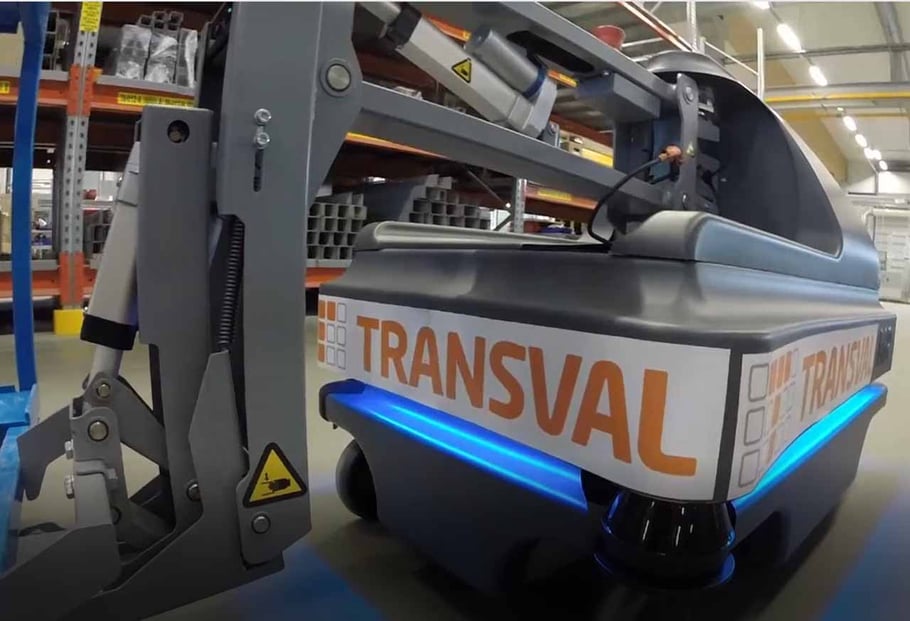
What are the benefits of robots in in-house logistics?
The benefits of industrial robots are well known. The manufacturing industry uses robots to make work more efficient and to replace difficult, heavy or unhealthy tasks for human workers.
Why would a company invest in robots for in-house logistics? For the same reasons it invests in industrial robots. To improve the efficiency of the in-house logistics operation, making the production value chain flow more efficiently. To serve the worker, so that he can focus his efforts on more important things. According to Ville Pahlsten, the starting point is that robotics makes operations in a company more efficient. You have to think about where you can make the material flow more efficient and assign a specific task to the robot.
- The task or movement performed by the robot must be repeatable. If a robot picks up an object, grabs things or works on something with any tool, it is always a safety risk that needs to be assessed. Often it requires the robot to be isolated behind shields or safety sensors. In contrast, bringing things to a human is easier for the robot, such a collaborative robot does not need to know and perform complex tasks.
According to Markku Viljanen, in the use cases Transval has studied, a collaborative robot working with a human could do 70-80% of the work, leaving workers to focus on dealing with anomalies and process improvement.
- In addition, this type of robot is already quite easy to deploy and program, and after being taken out of the package, the robot can be up and running in a couple of hours. Programming an industrial robot is not something that just anyone can do.
When the robot came to work
There can be a certain amount of prejudice in companies when it comes to the introduction of robots. According to Pahlsten, the mainstreaming of robotics is usually slowed down by a lack of imagination in selecting applications, concerns about the total cost of investment and a lack of experience in implementing robotics.
- There is a lack of knowledge about the scalability and flexibility of the technology and concerns about the complexity of programming and modifications. There is a perceived lack of skilled staff to operate and maintain robots in the company.
There is also prejudice against robots because of fears that they will take jobs. For these reasons, the "Robot at work" project has been launched. The project is exploring what needs to be taken into account when integrating robotics into the workplace.
- Instead of management wondering whether there will be enough workers for certain jobs in the future, or employees worrying about their jobs, they could think about how to use robotics to create meaningful jobs for people. They are planning what benefits could be achieved by taking the robot and keeping the worker. However, Pahlsten adds that it doesn't always work - companies have both good and bad experiences of this. For example, the work process of a mobile robot that transports goods has to be really standardised, says Viljanen.Viljanen says that this is still an experimental process. Although the mobile robot works as expected, its features are not yet fully in line with the requirements of many industrial environments.
- The capabilities of mobile robots have evolved significantly in recent years in a dynamically changing environment. We believe that, as these developments continue, mobile robots will become part of demanding industrial environments in the near future. Transval Industrial Services is preparing for the introduction of this potential by developing an IoRT programming solution that enables more automated control of mobile robots.
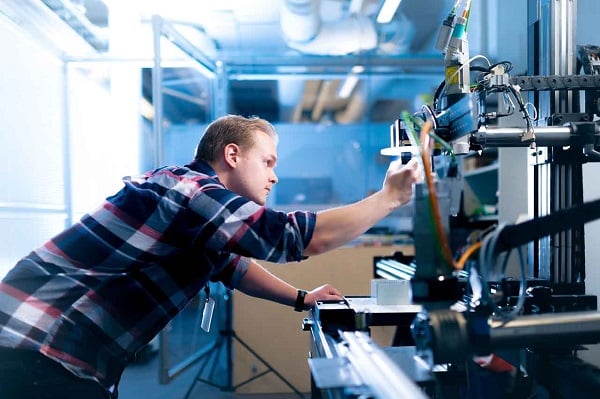
Robotics test bed for enterprises
To tackle the above-mentioned problems and prejudices, the JAMK Robotics Center has been established to provide a robotics testing environment for companies and also a robotics testing service on company premises. It also provides expert services and training for companies in the application of robotics, monitors the development of robotics and also disseminates information to new industries.
The Robots on Road project will experiment with robotic servicing of machines, material picking with a combination of articulated and mobile robots, pallet handling with mobile robots, robotic assembly, robotic picking of parts, product quality monitoring with a combination of machine vision and collaborative robotics, cutting and loading of construction joints, and edge or rail tracking. The project will modernize the testing and piloting environment at the JAMK Robotics Center, which will be available for further use by companies. For Transval, cooperation with JAMK is important," says Markku Viljanen.
- We don't have to go it alone with the robotics development projects that have been launched in recent years. Even now, we have two thesis writers working on the digitalization of work instructions and robotics. We are also finding new talent for our service through this.
Ville Pahlsten says that for JAMK, the Transval cooperation is important because robotics experiments can be carried out with a company that already has experience in robotics.
- Through the cooperation with companies, our staff stays involved in what companies are doing, and at the same time we get a view of the future and the needs of companies. We provide employment opportunities and internships for students studying to become automation engineers.
The future of robotics
Nowadays, a robot usually recognises two dimensions: something either is or is not. In the future, they will adaptively and accurately detect whether something is good enough or not. For example, whether a surface is flat enough," says Pahlsten. In the future, robots could be drones that perform checks.
- The robot could also be a program that runs other programs and acts like a human. For example, using robots to move things from one place to another," envisions Viljanen. The future of robotics is only limited by the imagination, and it's always worth looking outside your own field for ideas.
Text by Anne Penttilä, photos by Mikko Vähäniitty

